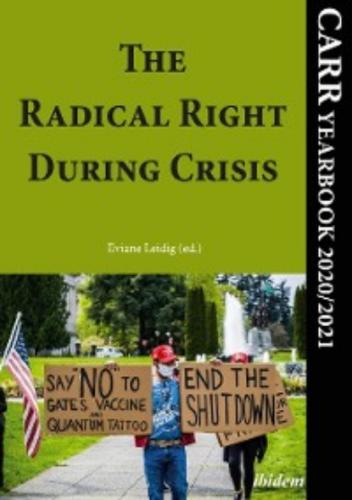The Radical Right During Crisis. Группа авторов
student and notified the police.8
Fosen Folkehøgskole is not exactly a place you would expect to find a future extreme right-wing terrorist, and police reports from his internet activity show Manshaus’ interest in the radical right, neo-Nazism, and terror grew rapidly in the spring 2019 after he had left the school. He had downloaded a PDF version of Siege by the American neo-Nazi James Mason, but his reading was broad and included the right-wing psychology professor and professional contrarian, Jordan Peterson, as well as Anders Behring Breivik’s manifesto. Manshaus seemed more interested in the “alt-right” than neo-Nazism and terror attacks.
More than anybody, Manshaus seemed obsessed with Brenton Tarrant who carried out the terror attack on the mosque in Christchurch, New Zealand. In Manshaus’ notes, the police found a detailed terror plan that was lifted directly from Brenton Tarrant´s manifesto and also happened to be influenced by Breivik. The Norwegian police had Manshaus under observation for a while and his old friends described him as having become radicalised.9 Especially from the summer of 2018, he had become awkward and difficult to socialise with because of his views and as a result he spent more and more time on his own.
In court the police presented their analysis of Manshaus’ activities in the last two years: activities that led to him becoming a Nazi, an anti-Semite, and a terrorist. He had searched for and visited Internet sites with key words such as “Nazi”, “nigger”, “Jew”, “genocide”, “Breivik”, “Holocaust”, “NRM”, “4Chan” and “8Chan”. Manshaus had showed an interest in 4Chan since his mid-teens but his engagement intensified in 2018. In court, he complained that anyone interested in something deviant in relation to the Holocaust or immigration was being subject to a “witch hunt”. Moreover, he had also tried to convince friends of conspiracy theories and Holocaust denial. Furthermore, he had expressed hatred of Jewish people and showed an interest in the school shootings in the US and Finland. He was also fascinated by alt-right Internet culture and had written about race and religion in his diaries and of a ‘psychological war against my people’. The security services say his relation to reality had started to show signs of radicalisation in 2018. Philip Manshaus’ internet activity escalated after the Christchurch attack when he also started searching for weapons for sale and avidly read the bible to find viewpoints against racial mixing. He had also read the racist ideologue David Lane who had been imprisoned a third of his life for murder of a Jewish journalist and used Lane’s “14 words” in court (i.e., “We must secure the existence of our race and a future for White children”).10
In the wake of Breivik’s (successful) and Manshaus’s (failed) attacks, Norwegian society and the security services have their work cut out. There is a relatively small number of neo-Nazi groups and individuals in Norway but, left radicalised by the Internet and international events, they are more likely to carry out violent attacks than before. Klungtveit says neo-Nazism is no longer taboo among the younger generation, but that it is an international phenomenon.11 In Norway, the media, in the name of “freedom of speech”, is facilitating agency and a space for radical right to voices to be heard, helping to normalise them and therefore ultimately make such attacks more likely in the future.
Dr Mette Wiggen is a Senior Fellow at CARR and lecturer in politics and international studies at the University of Leeds.
1 “Norway: Mosque Attacker Sentenced to 21 Years ‘Preventative detention’,” Deutsche Welle, August 12, 2019, https://www.dw.com/en/norway-mosque-attacker-sentenced-to-21-years-preventive-detention/a-53771965.
2 Mette Wiggen, “The Nordic Resistance Movement”, CARR Insight Blog, March 24, 2020, https://www.radicalrightanalysis.com/2020/03/24/the-nordic-resistance-movement/.
3 Harald S. Klungtveit, Nynazister Blant Oss: På Innsiden av Den Nye Høyreekstremismen (Oslo: Kagge Forlag, 2020).
4 Alf Bjarne Johnsen and Morten S. Hopperstad, “Gransker PST’s Tipshåndtering før Moske-Angrepet,” VG, February 19, 2020, https://www.vg.no/nyheter/innenriks/i/Jo4pyj/gransker-psts-tipshaandtering-foer-moske-angrepet.
5 Dag Herbjørnsrud, “Slik Feilet Bærum-Politiet i Rulleskisaken”, Utrop, May 5, 2020, https://www.utrop.no/plenum/ytringer/216129/.
6 Fouad Acharki, Martin W. H. Zondag, and Victoria Wilden, “Manshaus-Saken—Svært Uheldig at Politi-og PST-Gransking Ikke er Klar,” NRK, May 6, 2020, https://www.nrk.no/osloogviken/gransking-av-politiet-og-pst-koronautsatt-1.15001569Deleayed case
7 Fosen Folk School—Norway’s organic folk school, https://www.fosen.fhs.no/en/.
8 Amanda Nordhagen Walnum, “Rektor: -Ønsker at Vi Varslet Videre,” Dagbladet, August 14, 2019, https://www.dagbladet.no/nyheter/rektor---onsker-at-vi-varslet-videre/71485857.
9 Oda Ording, “Venninne Møtte Manshaus Ett År Før Angrepet: - En Dommedagsfølelse,” VG, May 15, 2020, https://www.vg.no/nyheter/innenriks/i/70rzpw/venninne-moette-manshaus-ett-aar-foer-angrepet-en-dommedagsfoelelse.
10 Jon Færseth, “David Lane og de 14 Ordene,” Fri Tanke, May 7, 2020, https://fritanke.no/david-lane-og-de-14-ordene/19.11429
11 Klungteveit, Nynazister Blant Oss.
Canada Filed the First Incel Terrorism Charge. How Do We Combat This Threat?
Cristina Ariza
In May 2020, the police uncovered evidence that the attacker who killed a woman and injured another at an erotic massage parlour in Canada in February 2020 was inspired by incel ideology.1 Since this revelation the attack has been treated as terrorism, making it the first time that terrorism charges are being applied in Canada to a suspect not inspired by Islamist extremism.
Incels are short for “involuntary celibates”, a loosely organized network of men that blame women for refusing to engage in sexual relationships with them. Incels believe there are three main groups in society: the alphas, referred to as “Stacys” and “Chads”, who are deemed the most attractive women and men; the betas, or “normies”, who are average-looking; and the incels, who are portrayed as undesirable to women and are therefore denied sex.2
The movement has not always been violent or misogynistic. One former incel told Vox about how he used to engage in online chats in the 2000s to ask for advice from female users about how to talk to women.3 But in the last couple of years, the movement has embraced clear sexism and misogyny, sometimes culminating in acts of violence.4
Terrorism
